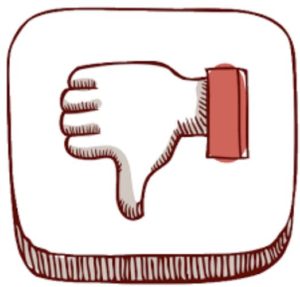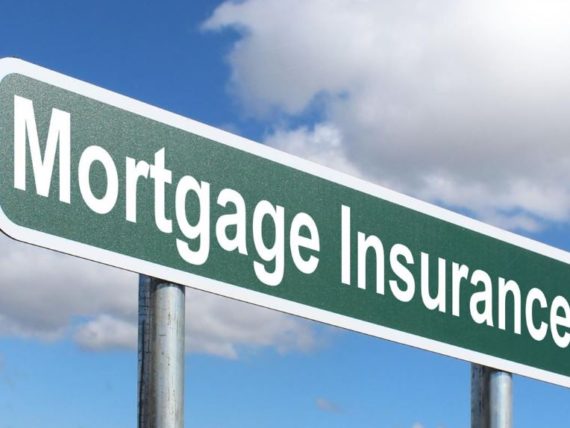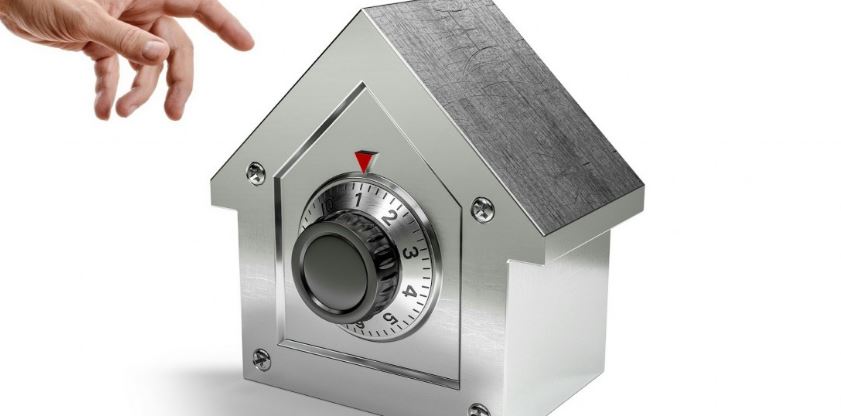Ais Assist


Is A Pension Mortgage A Good Investment?
When you are saving money to put into your pension, it is important to review it on a regular basis. This way you will be able to see how it is being invested. As you grow older, you may even decide to change the way you invest your money so that there will be less risk as you get closer to retirement age. With that said, should you consider investing in pension mortgages?
Mortgage Products
Over the past few decades, competition has been responsible for many of the newer mortgage products that are on the market. However, the majority of people still prefer repayment and endowment mortgages. In fact, all other mortgage loans in the industry accounted for only around 17 percent of the new construction society mortgages.
The mortgage products that are not as popular are:
- Mortgages that are repaid by unit trust investments
- Mortgages that are paid by lump sum contributions to pension funds or personal equity plans
- Loans that are half repayment and half endowment
- Mortgages that are in foreign currencies

Unit Trust Mortgages
These types of mortgages were never really popular or well-known, and even though they claimed to improve investment values quickly, and allowed borrowers to pay off their mortgages early, it was not too long before they were proven to be just as vulnerable when the stock markets fell.
The values of these unit trusts dropped and so did the shares. Borrowers were faced with the possibility of a shortfall when they were ready to redeem.
Pension And PEP Mortgages
These types of mortgages are viewed as more stable than unit trust mortgages. Both pension and PEP mortgages are tax-efficient. Investors do not have to take out a large amount, they only need to take out an interest-only mortgage. With this type of mortgage, they only pay the interest and they also get traditional tax relief as well.
The investors are also eligible to purchase personal equity plans or savings plans that have annual lump sums. In addition, the capital and the income are both accumulated and are tax-free until it is time the mortgage is up for redemption.
The contributions that are made tax-free and the repayment of the mortgage comes from the retirement lump sum. As a result, a balance remains that is used for the pension.
However, there is a downside to these types of mortgage products. They are not able to provide the same type of discipline that a repayment or endowment mortgage can, and they also rely heavily on the borrower to keep a realistic investment amount in the pension or PEP plan.
Who Is Not A Good Candidate For A Pension Mortgage?
These types of pension mortgages are not a good fit for everyone. However, those who are self-employed and have enough disposable income often find that this type of investment helps them save thousands of pounds.
This type of mortgage works similarly to the types of mortgages that are backed by personal equity plans or endowment policies. The customer borrows the money, but they only pay back the interest to the lender. Once the term has ended, the customer does not pay off the capital. Instead, the mortgage loan is paid via a lump sum that the lender receives from the person’s individual pension fund once he or she enters retirement.
On the other hand, homebuyers who are considering pension mortgages have to be dedicated to staying self-employed. Or, they must be dedicated to having a personal pension scheme.
If there is any chance that the homebuyer may gain employment through an employer that has a competitive pension scheme, it may be the wrong time to commit to using a personal plan to pay off a mortgage.

What Are The Benefits Of A Pension Mortgage?
One of the benefits of pension mortgages is that they have a high tax-efficiency level. The lump-sum monies are tax-free, and this means that investors who are in a slightly higher income bracket put only pounds 60 for every pounds 100 that is invested.
The repayment mechanism for pension mortgages can also be transferred whenever the investor decides to remortgage or move. This differs from repayment mortgages in that they have to be repaid if the investor moves.
What Are The Disadvantages?
One of the biggest drawbacks of these types of investments is that the required level for contributions need to cover the capital of the loan. The maximum lump sum that is allowed on a personal pension fund for retirement is only 25 percent of the complete fund.
The remainder of the money has to be used to buy a retirement income plan or an annuity. This means that if the value of the mortgage is pounds 150,000 the total fund in the pension must be at least pounds 600,000.
 Even if the fund is able to reach the required size by retirement, the investor will still need to make a decision. Will he or she really commit the majority or even all of their tax-free pension to repay a mortgage loan instead of earning pension during their retirement?
Even if the fund is able to reach the required size by retirement, the investor will still need to make a decision. Will he or she really commit the majority or even all of their tax-free pension to repay a mortgage loan instead of earning pension during their retirement?
There are some mortgage lenders who will advance only 80 percent of the total lump sum because of that very reason. Those who are taking out mortgages should also understand that the benefits are only taken from the pension and the capital that is paid off whilst they are between the ages of 50 and 75. This is one reason why term assurance policies are typically required when a person chooses a pension mortgage.
Industry experts suggest that those who are interested in pension-backed mortgages make sure that their pensions are generously funded. This will help to compensate for the money that they will have to withdraw. This is the money that they are using to repay a mortgage loan that would go towards financially supporting them during retirement.
Investors can choose to purchase a second-hand endowment policy to help fund the mortgage repayment. It is best to speak with an experienced policy trader for advice on the best way to proceed with this option.

Some Facts About Mortgage Protection Insurance
A home is often a purchase that is made once in a lifetime and involves you having to make regular mortgage payments every month for periods that can be as long as 30 years. It will often be the largest source of debt that can burden your finances and keep you always worried about your sources of income to meet this obligation.
Mortgage protection insurance is a form of life insurance that can ensure that your mortgage will continue to be paid even in case you die before the mortgage is paid. It acts as an ultimate safety net that protects your family and ensures they will never be deprived of their homes. In this form of insurance you by a policy for the amount of your mortgage and pay the regular premiums, and once the term is over, the policy ends. Death during the term of the policy will result in the payment being made to your beneficiaries.
 Mortgage protection does differ from other life policies. In most cases, the company or lender who has given you the mortgage amount will be the beneficiaries of the policy and enables them to recover the loaned amount from this insurance policy. Mortgage balances will reduce as mortgage payments are regularly made, so the death benefit of the policy also changes to cover the mortgage amount that is remaining.
Mortgage protection does differ from other life policies. In most cases, the company or lender who has given you the mortgage amount will be the beneficiaries of the policy and enables them to recover the loaned amount from this insurance policy. Mortgage balances will reduce as mortgage payments are regularly made, so the death benefit of the policy also changes to cover the mortgage amount that is remaining.
Mortgages are one of the biggest debts that persons can incur and the mortgage protection insurance specifically addresses this debt. You can always opt instead for a life insurance policy that covers this amount and goes directly to your family, but in case you die and they get their benefits they would have to take responsibility for allocating it properly. This guesswork is no more necessary if you have mortgage protection insurance. It is always matched to the mortgage balance and thus there will always be an amount that can cover your mortgage.
This form of insurance is different from the private mortgage insurance that many lenders will insist on, especially if your down payment for a home is less than 20 %. This private mortgage insurance only protects the lender when you default on mortgage payments and will in no way protect your family if you die. That is why it is important that you either have a proper life insurance policy or a mortgage protection insurance policy to take care of the payments in case you die. A life insurance policy must be for an amount greater than your mortgage amount. The advantage here is that in case you die, your family can still pay for the home for the balance amount remaining and will still have some sum left over for their needs. Your decision about the type of policy you should take to protect your home and your family can depend on the extra burden that the premiums will require you to undertake.
Mortgage protection insurance is rather narrow in scope. A regular life insurance policy will allow you to cover your mortgage amount and more. Mortgage protection insurance will allow you to cover your mortgage payments, but as they are often more expensive than standard insurance policies, it can severely affect your finances and ability to meet regular premiums as well as the mortgage payments. Life insurance premiums can be paid for the entire life and are therefore lower than mortgage insurance which is for a limited term.
 One advantage is that most of the policies do not require any medical exam, as would be required for life insurance, and this can be an advantage if you do have some health issues. Your family will continue to have a home even when you die or are not able to work because you have become incapacitated. This makes this policy more versatile than a life insurance policy.
One advantage is that most of the policies do not require any medical exam, as would be required for life insurance, and this can be an advantage if you do have some health issues. Your family will continue to have a home even when you die or are not able to work because you have become incapacitated. This makes this policy more versatile than a life insurance policy.
Mortgage protection insurance premiums are at a fixed rate while the payout follows the mortgage. So the value of the policy will reduce over time, as you will have paid the mortgage monthly payments to the lender. You can get newer policies where premiums can reduce over time, but you need to be careful when you take the policy and understand its terms. Mortgage protection insurance benefits the lenders and can at times help you to get better terms for your mortgage. The only benefit that comes to your family is that in case you die, they do not have to worry about making any further payments and are assured that the house has been fully paid for and they become the owners.
Many of these policies allow you to convert the policy into a life insurance policy if you have paid off the mortgage. Others may return your premiums if you have never filed a claim. However, with time and inflation, the value of this amount will have eroded. This form of insurance is of advantage to those who find it difficult to qualify for regular life insurance.
Most of these insurance policies for mortgage protection cannot be availed of after a certain age or will offer shorter term policies that will then have increased premiums. It can, therefore, be better if you simply buy more life insurance using the premiums you intended to pay for the mortgage protection insurance. You will get far bigger amounts that can go further to ensuring that your family, in case of your death, are never left in financial difficulties.

The Different Types of Home Insurance Coverage

Whether you are purchasing your first home insurance policy or want to update your current coverage, knowing the basics of homeowners insurance is essential. Before making a decision, you’ll want to be familiar with the various type of home insurance available.
The Basic Home Insurance Policies
Just like other forms of property insurance, home insurance coverage has various sections and types of coverage. Home insurance policies can feature several standard components which include:
Dwelling Coverage
This is the basis for all recommended home insurance policies and provides protection for your home’s structure including the wall, floors, ceilings, built-in appliances and any attached structures. It ideally covers an array of perils which include hail, vandalism, fire, and theft. In case of a total loss, this coverage can also help you rebuilt your house, but up to the policy limit.
Personal Liability
This is a coverage that protects you against claims filed against you for property damage or injury if someone is injured while on your property.

Contents Coverage
This coverage protects items such as clothing and furniture in your property. If a covered incident were to happen, you will get compensated for the value of the items, as defined by your policy.
Additional Living Expenses
This is a coverage that covers the costs that you may incur if you have to temporarily move due to your house becoming unlivable because of covered damage.
The Different Types of Home Insurance Coverage
Basic Form (HO-1)
This is the standard, named-peril home insurance policy form and it’s the least expensive. However, it has the least amount to coverage, often covering fire or smoke, theft, lightning, explosions, windstorms and hail, vandalism, volcanic eruption, damage from cars, civil commotion and riots as well as damage from an aircraft.
This form of coverage largely covers dwelling protection, but with some insurance providers, you can add property coverage and or personal liability.
Broad Form (HO-2)
This is also a named-peril policy that covers all perils in HO-1, plus the following:
- Falling objects
- Accidental overflow of steam or water
- The weight of snow, sleet or ice
- Sudden or accidental damage to pipes and other household systems.
- Accidental damage from an electrical current
This type of coverage often covers dwelling protection, personal liability and personal belongings. However, HO-2 just covers the names perils mentioned in the policy.
Special Form (HO-3)
This is the most common form of home insurance because of its coverage and affordability. For starters, it covers all the perils covered in Broad Form and more. It’s ideally a named-peril policy and so, it covers you from any an all perils except those that are specifically excluded from your policy.
HO-3 coverage also covers your property, liability and personal belongings. The excluded perils include floods and earthquakes.
 Tenant’s Form (HO-4)
Tenant’s Form (HO-4)
This is a tenant’s policy for homeowners insurance. Under this form of coverage, your personal liability and personal belongings as a renter, are covered. The residence itself isn’t as it is covered by the owner’s home insurance. Sometimes additional living expenses can be added in this type of policy.
Comprehensive Form (HO-5)
This is a policy that you can tell from the name covers more perils than any other kind of homeowners insurance policy. It’s an open-peril policy for both liability and property and it covers all perils except those listed as exclusions. The perils excluded in the comprehensive form are floods and earthquakes or earth movements.
As already mentioned, it is the broadest type of home insurance and it’s more expensive than Special Form. However, it does give more comprehensive coverage.
Condo Form (HO-6)
This is the coverage you require if you own a condo. It protects your personal belongings and covers personal liability. It ideally covers the interior of your unit including the ceilings, floors and walls.
Mobile Home Form (HO-7)
This is a policy that’s meant for manufactured or mobile homes only. It covers the same perils as HO-3 or Special Form, but it’s ideally designed specifically for these kinds of houses.
Older Home Form (HO-8)
This is a kind of policy that specifically covers older homes. The age is defined by the insurance provider and provides the same coverage as Special Form, but with a few alterations that address differences that exist in older homes.
These are the common types of home insurance coverage, but they do not cover everything, as you may have noticed. As such, it is usually a good idea to customise your policy by including additional coverages in order to suit your specific needs and situation. Here are some of the optional add-on home insurance coverages that you may want to consider:
1. Flood Insurance– This protects your belongings and property from flood-related damages. It’s a separate policy and has its own deductible. So, if you reside in a region that’s prone to flooding, then you may want to consider flood insurance.
 2. Earthquake Insurance– This protects your house from damages caused by an earthquake or earth movement. It ideally has its own deductible and should be something to consider if you live in a region prone to earthquakes.
2. Earthquake Insurance– This protects your house from damages caused by an earthquake or earth movement. It ideally has its own deductible and should be something to consider if you live in a region prone to earthquakes.
Sewer Water Backup-This policy protects your house in the event of a drain or sewer backup.
3. Other Structures Insurance- This one covers property that’s not attached to your home including shed, gazebo or unattached garage. If you won any of these structures, then it’s advisable to insure them to avoid the huge expenses in case of damage or theft.
4. Replacement Cost Plus– This provides an extra layer of coverage that can cover the additional costs required to rebuild a house after experiencing a total loss. If you’ve owned your house for a long time and are concerned about depreciation, this kind of coverage may be a good idea.
5. Medical Payments Coverage– This is a policy that covers the medical costs that result from an accident on the client’s property. This policy is meant for instant medical attention of guests on a customer’s residence without determining fault.
So there you have it, the common types of home insurance coverage and the additional policies that you can take to ensure the ultimate protection.

Understanding the Roles of Renter’s and Homeowner’s Insurance
For those who have never bought homeowner’s or renter’s insurance before, the differences between the two insurance types may not be obvious at first. If you’ve never purchased renter’s insurance but you plan to lease out a home that you already know, it’s especially useful to understand what these differences are. In the article below, we’ll explain what you can expect in terms of coverage and cost between renter’s and homeowner’s insurance policies.
Both policy types are paid monthly and serve the purpose of covering damage. But that’s about where the similarities end.
Coverage
Homeowner’s insurance is a mandatory insurance policy that all homeowners are required to have. It covers:
- The house and adjoined buildings, like garages.
- Personal possessions.
- Personal liability if someone is hurt or their items are damaged on your property.
- Medical expenses as a result of a catastrophe that affects the home.
- Temporary lodging costs if the damaged dwelling is unsafe to live in.
Renter’s insurance policies can vary wildly in terms of what they cover. They can cover everything that is covered by homeowner’s insurance, with the exception of the property itself.
Cost
 Homeowner’s insurance is substantially more expensive than renter’s insurance. This only makes sense, since the dwelling itself is the most valuable thing to insure. Renter’s insurance can actually be quite affordable, to the point that many renters are prioritizing it when they sign a lease to live on someone else’s property.
Homeowner’s insurance is substantially more expensive than renter’s insurance. This only makes sense, since the dwelling itself is the most valuable thing to insure. Renter’s insurance can actually be quite affordable, to the point that many renters are prioritizing it when they sign a lease to live on someone else’s property.
Requirements
Homeowner’s insurance is 100% mandatory for those who have purchased a home. This is because the lending institution wants to make sure that their investment is being protected. Renters cannot take out homeowner’s insurance. For as long as they live in the insured dwelling, the homeowner’s insurance policy will cover damage sustained by the property.
Renter’s insurance, on the other hand, is never required except by the property owner. Not every property owner who leases out their home will mandate tenants have this type of insurance, but an increasing number of landlords are doing so.
Renter’s and homeowner’s insurance policies are both incredibly useful and effective at helping everyone involved to save money in the event of a disaster. While renter’s insurance may not be mandatory for signing a lease with a property owner, more and more renters are seeing the virtue in getting such a policy. Oftentimes, renter’s insurance can even be bundled in with your existing auto insurance policy!

Why is Homeowner’s Insurance So Incredibly Important?
When you buy a home, you are making the investment of a lifetime – an investment of money, but also your valuable time and energy. Homeowner’s insurance is the way that we protect this investment from the circumstances that we can’t plan for or reasonably expect to happen in the first place.
In this article, we’ll show you 5 reasons why it’s so important that you invest in homeowner’s insurance upon buying a home.
Your Mortgage Lender Requires it
Mortgage lenders from any type of financial institution will insist that you purchase homeowner’s insurance before closing on a home. This is mandatory, as it shows that you are serious about the purchase and you are willing and able to protect it. If the house is lost in the event of a catastrophe, that’s money that your lender could be losing, too.
Homeowner’s Insurance Protects Your Property
There are a lot of bad things that can befall a home: fire, vandalism, flooding, earthquakes, theft. Sometimes, these events can cause a tremendous amount of destruction and loss – which you can’t afford to pay for out of pocket on top of your existing mortgage payments and other life expenses. Homeowner’s insurance kicks in during these times to cover the damage and restore your home without putting you in financial ruin.
If your property is deemed too unsafe to live in after an incident occurs, your insurance may even put you up into temporary lodgings while repairs are underway.
Your Possessions Can Be Protected, Too
Some homeowner’s insurance policies will protect not only the home and the land on which it resides, but also the possessions that you keep under your roof. While nothing can replace the sentimental value that you may assign to your personal belongings, your insurance policy can at least cover the financial loss if they are destroyed.
Your Liability is Secured
If someone gets hurt on your property or they experience serious damage of a personal possession on your property, you could end up on the hook for a substantial sum. Medical expenses and property damage can be very real problems in such an event, but your homeowner’s insurance can be made to protect you by paying these expenses instead of having it all come directly out of your pocket.
Peace of Mind is Worth Everything
More valuable than any financial sum, peace of mind is something that every homeowner wants. Nobody wants to lie awake at night, fearful of what may happen and being thrown into a financial disaster as a result. When you have homeowner’s insurance, you can breathe easily in knowing that you can focus on personally recovering from a disaster while your insurance company handles the rest.
Contact Information
Phone: 973-818-3567
Our Location: 1316 Hilltop Haven Drive Rochelle Park, NJ 07662, USA

